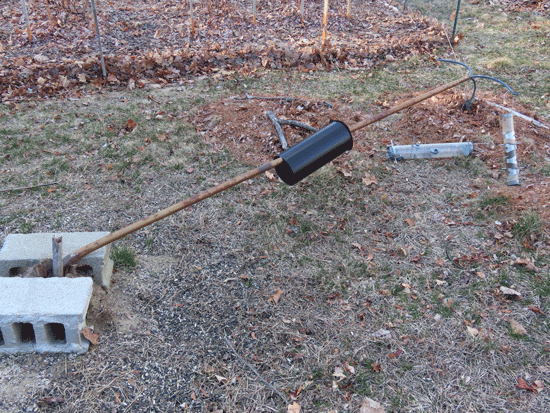(by Pam Hunt)
A couple of quizzes ago we featured the Carolina Wren, a southern species moving north into New Hampshire. This week’s bird is another southerner, and regularly confuses people unfamiliar with it for a couple of reasons. One is its name and the other is its range. Like the Carolina Wren, older maps in field guides don’t show it as occurring in New Hampshire, whereas we can assure you that it does – and is actually quite common over an increasing portion of the state. Have you seen one at YOUR feeders?
Photos by Pam Hunt unless noted.
Scroll down for the answer…
…
…
…
…
…
Most of us are familiar with Downy and Hairy Woodpeckers, which are common feeder birds throughout the state, but there is a third species that is actually a lot more common than people think it is. In the quiz photo, this woodpecker appears to have an all read head, with its zebra-striped back being another pretty obvious field mark. The head, however, is actually NOT all red: the color is limited to the crown and nape as shown in the photo below. This, along with the overall beige underparts and striped back, mark the species as a Red-bellied Woodpecker. A common critique of this bird’s name is that it doesn’t really have a red-belly, but you can see the reddish blush in this second photo, thus indicating that while the name is misleading, it’s technically not incorrect!
Another “problem” with Red-bellied Woodpeckers is that they are a relatively recent colonist to the state (more on this in a moment), and as a result, information on their range is often outdated. Many older field guides don’t show them occurring in New Hampshire at all, and even more current ones are likely a few years behind. My old Petersen eastern guide (1980) doesn’t show Red-bellies north of coastal Connecticut, and the original Sibley guide (2000) shows them only as far as Massachusetts. They finally show up in the southern third of New Hampshire in the sixth edition National Geographic (2011) and eastern Sibley (2016) guides.
As of this writing, Red-bellies are fairly reliable in the southern half of the state, and slowly increasing east and west of the White Mountains. The maps below show the approximate extent of Red-bellied Woodpecker sightings in New Hampshire in ten-year periods. Note that they are not equally common throughout the orange areas, and tend to be harder to locate farther north and at higher elevations.
This invasion of Red-bellied Woodpeckers mostly started in the 1990s, and really kicked into gear starting around 2000, as shown in the accompanying graph. This shows population trends (using an index vs. actual numbers) starting in 1985 on two different data sets: NH Audubon’s Backyard Winter Bird Survey and the NH data from the nationwide Breeding Bird Survey. Reasons behind this rapid northward expansion aren’t clear, but may involve climate change, natural population cycles, and (more recently) infestations of forest pests like the emerald ash borer. Whatever the cause, Red-bellies are here to stay, and it’s only a matter of time before they fill in the rest of the state.
Because field guides often don’t show the Red-bellied Woodpecker’s range accurately, it’s not uncommon for people to think the woodpecker in their yard with a red head must be something else, and often turn to the related Red-headed Woodpecker (photo below). Note that the ENTIRE head of this species is red, and it’s body plumage is boldly patterned in black and white. Red-headed Woodpeckers are rare in New Hampshire, although a handful are seen ever year.
And now time for a public service announcement!
It may have snowed a little on April 1, but this doesn’t mean we’re still in the depths of winter! Bears are out and about, often for a few weeks already, so it’s important to take precautions with bird feeders. This can mean taking them down entirely, placing them where bears can’t reach them, or bringing them in at night. If you don’t, you risk waking up to a scene like the one captured by Becky Suomala below. Bears that get used to people – such as those expecting free sunflower seeds or suet – can become serious problems, which sometimes doesn’t end well for the bears. (More information on NH bears.)





